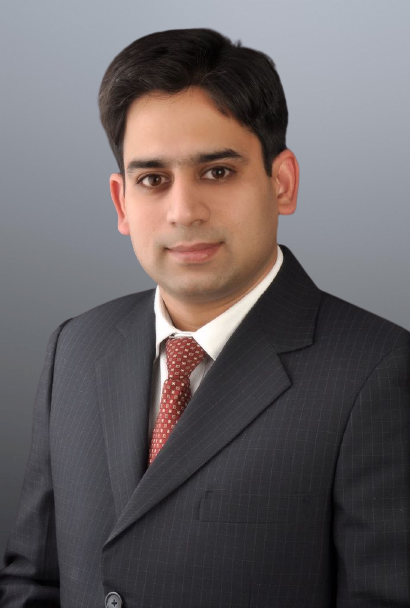Search Result: 16

Dr Abhay Challani
M.S orthopaedics
Registration No
5844476
Language
English

16 years experience overall

Navi Mumbai , Mumbai
TUE, THU, FRI, TUE, THU, FRI(05:00 PM-06:00 PM)

Dr Agnivesh Tikoo
MBBS,MS (Orthopaedics), FNB ( Spine Surgery)
Registration No
1062194
Language
English, हिंदी, मराठी, ਪੰਜਾਬੀ

10 years experience overall

Navi Mumbai , Mumbai
MON, MON | TUE, TUE | MON, THU, FRI, MON, THU, FRI | WED, WED | TUE, THU, TUE, THU | SAT, SAT(04:00 PM-06:00 PM | 10:00 AM-12:00 PM | 10:00 AM-01:00 PM | 03:00 PM-06:00 PM | 04:00 PM-05:00 PM | 10:00 AM-02:00 PM)

Registration No
5512520
Language
English, हिंदी

11 years experience overall

Chembur , Mumbai
WED, SAT(04:00 PM-05:00 PM)

Dr Anil Bhatia
MBBS, MS (Ortho). (Specialized into Brachial Plexus Injury)
Registration No
1476628
Language
English, ગુજરાતી, हिंदी

28 years experience overall

Navi Mumbai , Mumbai
SAT(04:00 PM-06:00 PM)

Dr Avinash B Sonawane
MBBS, MS (Ortho)
Registration No
4298820
Language
English

24 years experience overall

Navi Mumbai , Mumbai
MON, WED, FRI(04:00 PM-06:00 PM)

Dr Deepak Bhatia
MBBS, MS(Orth), DNB(Orth)
Registration No
1417320
Language
English, हिंदी, मराठी

16 years experience overall

Navi Mumbai , Mumbai
THU, THU(08:30 AM-12:00 PM)

Dr Dharmaraj Yadav
MBBS, MS (orth)
Registration No
976179
Language
English, ગુજરાતી, हिंदी, मराठी

27 years experience overall

Navi Mumbai , Mumbai
WED(04:00 PM-05:00 PM)

Dr Gautam Tawari
MBBS (Mum), MRCS, M.Sc, Dip. SEM, M.Ch (Orth), FRCS (Tr&Orth). (UK)
Registration No
1252771
Language
English, हिंदी, मराठी

5 years experience overall

Navi Mumbai & Vashi , Mumbai
TUE, FRI(09:00 AM-04:00 PM)

Dr Kshitij Thoke
MBBS, DNB, D'Ortho.
Registration No
4295172
Language
English, हिंदी

25 years experience overall

Navi Mumbai , Mumbai
TUE, THU, SAT(06:00 PM-07:00 PM)

Dr Prashant Agrawal
"MBBS,MS,DNB (Orthopaedics), AO Fellow ( Germany) SICOT. "
Registration No
934100
Language
English, বাংলা, हिंदी, मराठी

32 years experience overall

Navi Mumbai , Mumbai
MON- SAT, MON- SAT | MON- SAT, MON- SAT(10:00 AM-02:00 PM | 02:00 PM-03:30 PM)

Dr Sameer Chaudhari
MBBS, MS (Orthopedics), D.Ortho
Registration No
1183939
Language
English, हिंदी, मराठी

10 years experience overall

Navi Mumbai , Mumbai
SUN- SAT, SUN- SAT(06:00 PM-07:00 PM)

Dr Sanjay Dhar
MBBS,MS,DNB (Orthopaedics)
Registration No
842406
Language
English, हिंदी, मराठी

32 years experience overall

Navi Mumbai , Mumbai
MON- SAT | MON- FRI(12:00 PM-02:00 PM | 05:00 PM-08:00 PM)

Dr Shirish Vedpathak
MBBS, D’ORTHO, DNB
Registration No
6150550
Language
English

16 years experience overall

Navi Mumbai , Mumbai
MON- WED, FRI, SAT, MON- WED, FRI, SAT | THU, THU(04:00 PM-06:00 PM | 05:00 PM-06:00 PM)

Dr Siddhart Yadav
"MBBS,MS, (Orthopaedics), FASIF, Fellow Joint Replacement"
Registration No
975994
Language
English, हिंदी

25 years experience overall

Navi Mumbai , Mumbai
MON- SAT, MON- SAT | MON- SAT, MON- SAT(11:00 AM-01:30 PM | 04:45 PM-05:45 PM)

Dr Vikram Paode
MBBS,MS ( Orthopaedics), MRCS (Edinburgh)
Registration No
875920
Language
English, العَرَبِيَّة, हिंदी, मराठी

29 years experience overall

Navi Mumbai , Mumbai
WED | WED | MON, TUE, THU, FRI | MON, TUE, THU, FRI | WED | SAT | MON, TUE, THU, FRI(09:00 AM-02:00 PM | 07:00 PM-08:00 PM | 04:00 PM-09:00 PM | 02:30 PM-03:30 PM | 02:00 PM-03:30 PM | 09:00 AM-08:00 PM | 09:00 AM-02:30 PM)
Frequently Asked Questions for Arthrodesis in Mumbai
Arthrodesis of the foot is a surgery that entails the fusion of one or more joints within the foot. It is commonly performed to treat conditions such as severe arthritis, deformities, or chronic instability in the foot. The procedure aims to reduce pain and improve stability in the affected foot joints.
Yes, arthrodesis stiffens a joint by fusing the bones. This eliminates movement in the joint and can provide stability, relieve pain, and improve function. While the joint will no longer be flexible, it can still bear weight and perform most activities of daily living.
Yes, arthrodesis is an alternative to joint replacement surgery. It is typically considered when joint replacement is not feasible due to factors such as severe bone loss, infection, or patient preference. Arthrodesis can provide pain relief and improve function by stabilizing the joint.
Arthrodesis involves fusing bones to create a stable joint with no movement, while arthroplasty is a joint replacement surgery that replaces damaged or diseased joints with artificial ones. Arthrodesis is typically recommended when joint replacement surgery is not feasible or desired.
Long-term complications of arthrodesis may include adjacent joint degeneration, altered gait patterns, muscle imbalances, and increased stress on neighboring joints.
Post-procedure care for arthrodesis involves keeping the surgical site clean and dry, taking prescribed medications as directed, and following the recommended physical therapy exercises. Try to avoid putting excessive weight or stress on the joint during the initial healing period. Regular follow-up visits with your surgeon are essential for monitoring progress and addressing any concerns.
The duration of arthrodesis surgery depends on various factors, including the complexity of the procedure and the joint being treated. Generally, arthrodesis surgeries can take anywhere from 1 to 4 hours to complete. Your surgeon will provide you with a more accurate estimate based on your specific case.
The eligibility criteria for arthrodesis vary depending on the specific joint and the underlying condition causing pain or instability. Your orthopaedic surgeon will assess your medical history, conduct a physical examination, and request relevant tests to determine whether arthrodesis is an appropriate treatment choice for your condition.
The recovery time for arthrodesis depends on various factors such as the joint involved, the overall health of the patient, and adherence to post-operative rehabilitation protocols. Usually, it takes about 6 to 12 weeks for initial bone healing, but complete recovery may take several months to a year.
Before undergoing arthrodesis, your surgeon will conduct a thorough evaluation of your overall health and order blood work or imaging studies. You may be required to stop certain medications before surgery and follow specific fasting instructions. Your surgeon will provide detailed pre-operative instructions tailored to your case.
To find the best doctors for arthrodesis, you can ask your doctor for referrals or seek recommendations from friends and family. It is also helpful to do some research online and read reviews from previous patients. Additionally, you can consult hospitals or medical centres known for their orthopaedic specialities.
The success rate of arthrodesis varies depending on the specific joint being treated and the underlying condition. In general, arthrodesis has a high success rate, with most patients experiencing significant pain relief and improved joint stability. However, it is important to discuss the expected outcomes with your surgeon based on your specific case.
An orthopaedic surgeon with expertise in joint surgeries performs arthrodesis. These surgeons specialise in diagnosing and treating conditions affecting the musculoskeletal system, including joints, bones, muscles, ligaments, and tendons.
Related Procedures in Mumbai
- Doctors for Total Knee Replacement in Mumbai
- Doctors for Hip Replacement in Mumbai
- Doctors for ACL reconstruction surgery in Mumbai
- Doctors for Laminectomy in Mumbai
- Doctors for Arthrodesis in Mumbai
- Doctors for Osteotomy in Mumbai
- Doctors for Rotator cuff Tendinitis in Mumbai
- Doctors for Knee Replacement Surgery in Mumbai
- Doctors for Limb lengthening in Mumbai
- Doctors for Ankle surgery in Mumbai
Related Treatments in Mumbai
- Doctors for ACL Injuries Treatment in Mumbai
- Doctors for Arthritis Treatment in Mumbai
- Doctors for Carpal Tunnel Syndrome Treatment in Mumbai
- Doctors for Cerebral Palsy Treatment in Mumbai
- Doctors for Ganglion Cyst Treatment in Mumbai
- Doctors for Hemophilia Treatment in Mumbai
- Doctors for Marfan Syndrome Treatment in Mumbai
- Doctors for Muscular Dystrophy Treatment in Mumbai
- Doctors for Psoriatic Arthritis Treatment in Mumbai
- Doctors for Rheumatoid Arthritis Treatment in Mumbai
- Doctors for Scleroderma Treatment in Mumbai
- Doctors for Scoliosis Treatment in Mumbai
- Doctors for Spina Bifida Treatment in Mumbai
- Doctors for Spondylolisthesis Treatment in Mumbai
- Doctors for Trigger Finger Treatment in Mumbai
Other Specialities in Mumbai
- Best Urologist in Mumbai
- Best Pulmonologist in Mumbai
- Best General Physician in Mumbai
- Best Endocrinologist in Mumbai
- Best Cardiologist in Mumbai
- Best Oncologist in Mumbai
- Best Radiologist in Mumbai
- Best Orthopedics in Mumbai
- Best Hepatologist in Mumbai
- Best Gynecologist in Mumbai
- Best Dermatologist in Mumbai
- Best Gastroenterologist in Mumbai
- Best Psychologist in Mumbai
- Best Ent Specialist in Mumbai
- Best Nephrologist in Mumbai
- Best Rheumatologist in Mumbai
- Best Diabetologist in Mumbai
- Best Psychiatrist in Mumbai
- Best Neonatologist in Mumbai
- Best Dentist in Mumbai
- Best Dietitian in Mumbai
- Best Haematologist in Mumbai
- Best Pediatrics in Mumbai
- Best General Surgeon in Mumbai
Top Hospitals in India
- Hospitals in Ahmedabad
- Hospitals in Bangalore
- Hospitals in Bhubaneswar
- Hospitals in Bilaspur
- Hospitals in Chennai
- Hospitals in Delhi
- Hospitals in Guwahati
- Hospitals in Hyderabad
- Hospitals in Indore
- Hospitals in Kolkata
- Hospitals in Madurai
- Hospitals in Mumbai
- Hospitals in Mysore
- Hospitals in Nashik
- Hospitals in Noida
- Hospitals in Visakhapatnam
- Hospitals in Lucknow
- Hospitals in Bhopal
- Hospitals in Karur
- Hospitals in Kochi
- Hospitals in Nellore
- Hospitals in Trichy
- Hospitals in Kakinada
© Copyright 2024. Apollo Hospitals Group. All Rights Reserved.
 +91 8069991061
Book Appointment
+91 8069991061
Book Appointment






 Call Now
Call Now











